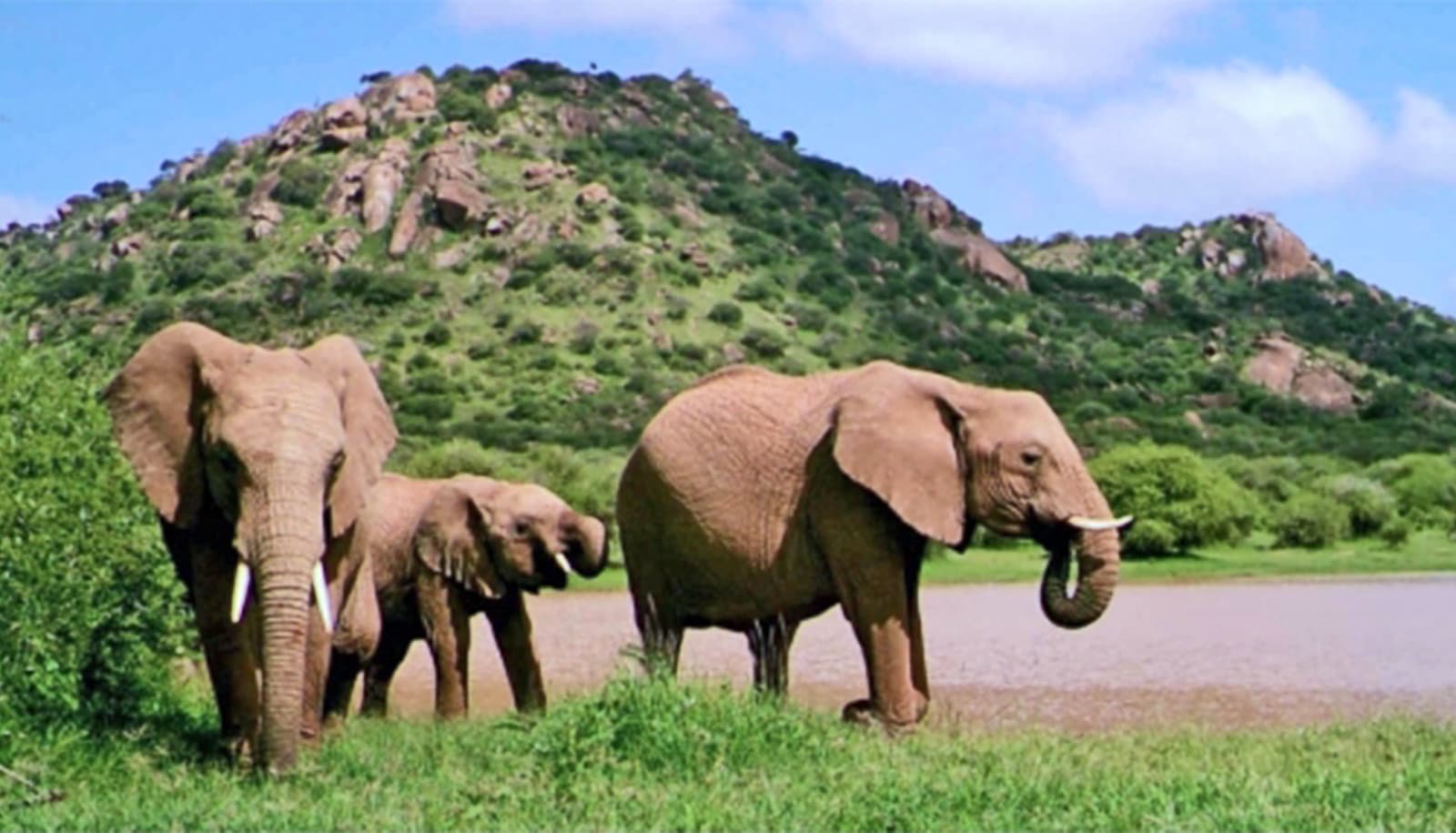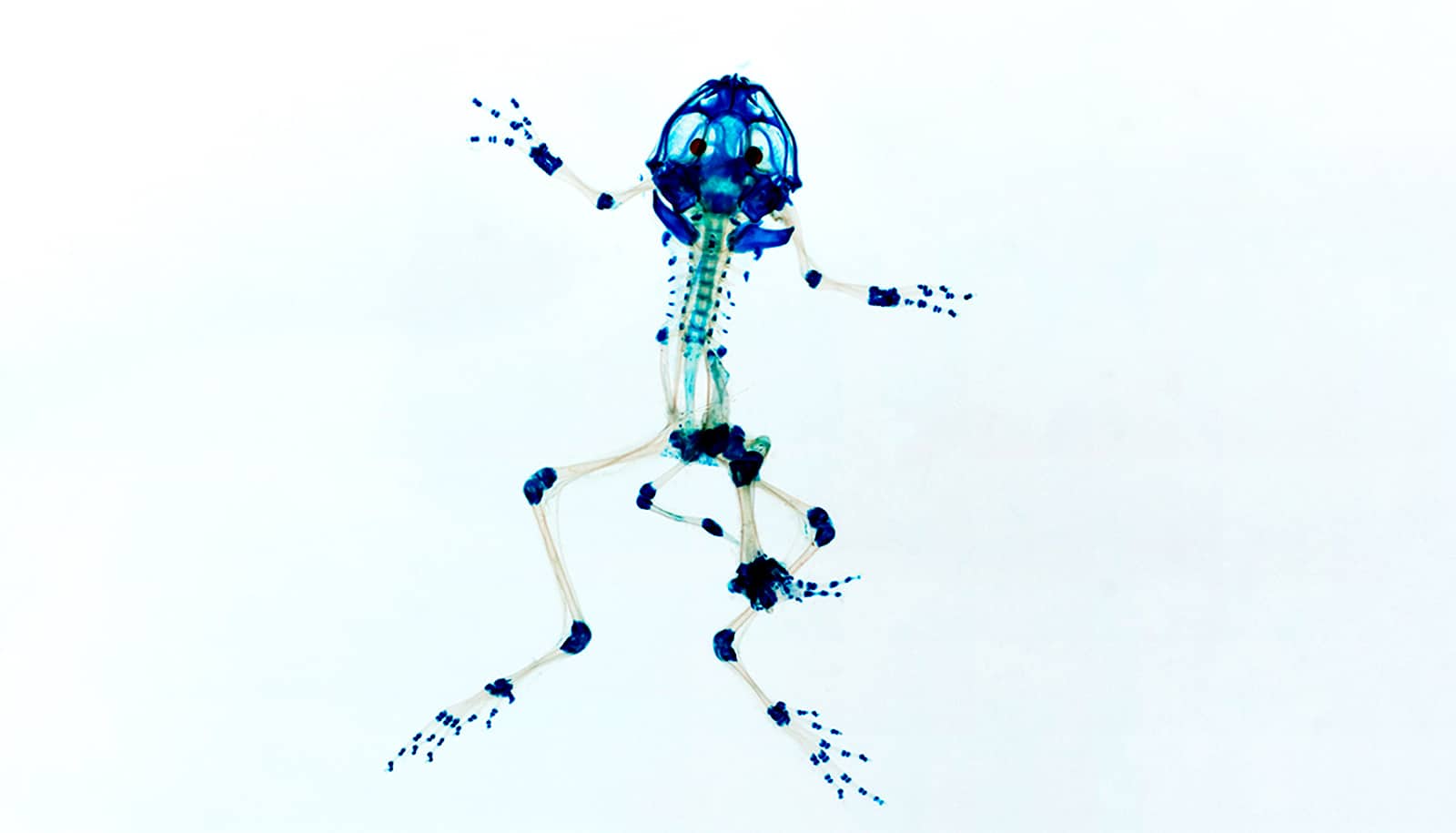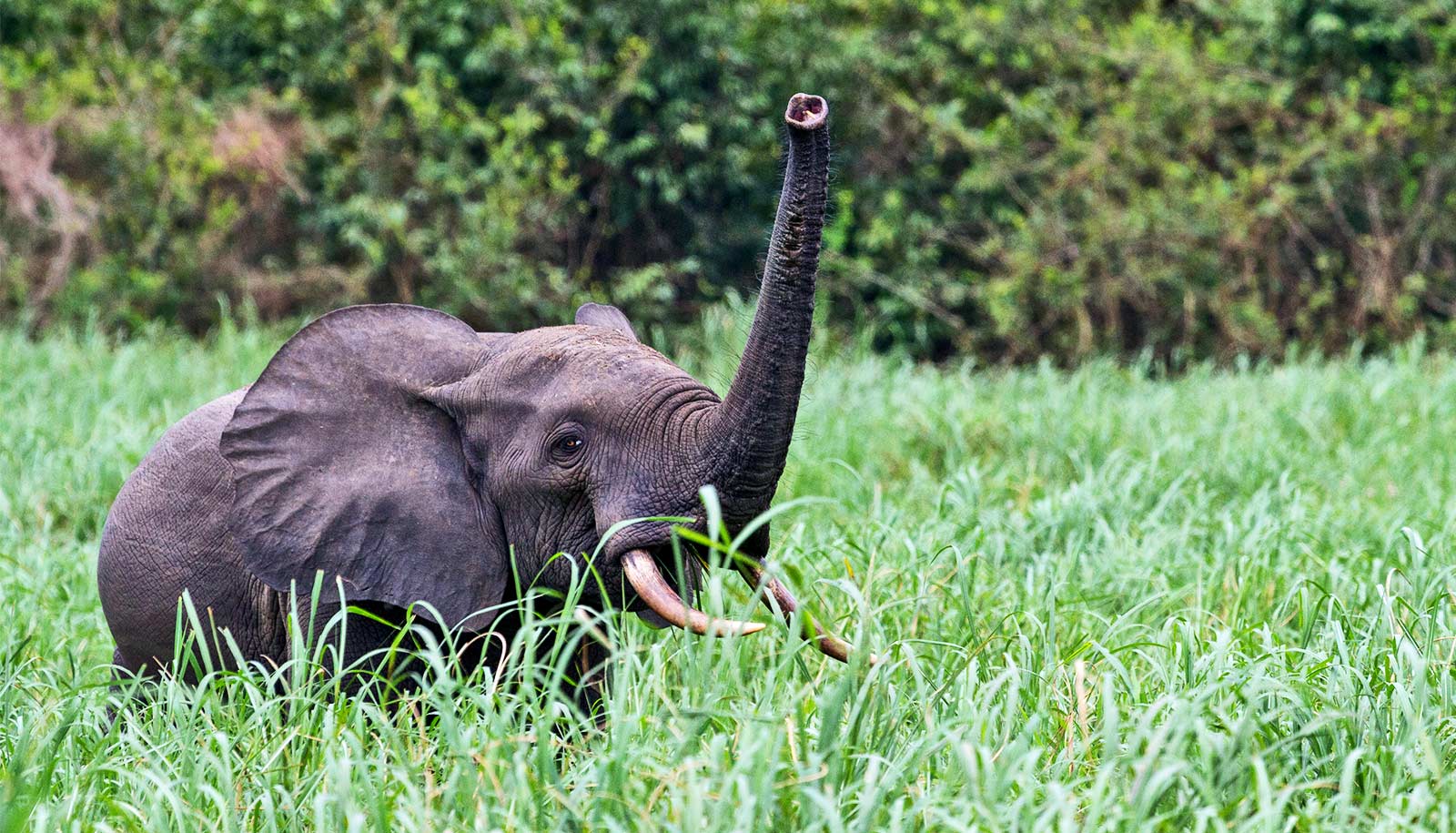New research shows parasite density is far higher around water sources than elsewhere in African savanna landscapes.
“We think about watering holes as being iconic centers of these majestic animals,” says Georgia Titcomb, a biologist at the University of California, Santa Barbara. “But they are also hotspots for the parasites that infect these animals.”
Resources bring organisms together, so Titcomb was curious how watering holes might affect the distribution and density of the savanna‘s parasites.
While the jump in parasite exposure risk varies among different host species, the team found it was two orders of magnitude greater for cattle and elephants in particular. The results, published in Nature Communications, provide ecological insights as well as potential applications in ranching and wildlife management.
Water supply and parasite density
Attracting both wildlife and livestock, such intensely shared resources as watering holes foster the spread of pathogens and parasites. And while they are often maligned, parasites can provide scientists with a wealth of information about ecosystem health and interactions between species.
Titcomb and her coauthors investigated how watering holes affected parasite transmission using gastrointestinal nematodes—an economically important parasite group with a relatively simple lifecycle.
To investigate the phenomenon, Titcomb conducted an experiment at Ol Pejeta Conservancy, in central Kenya. The sanctuary fills 16-foot wide concrete basins to provide wildlife and livestock with water. The scientists worked with Ol Pejeta staff to drain five basins for at least a year to compare them with five permanently filled basins and five dry locations for a total of 15 sites. They surveyed each location multiple times over the course of the experiment, visiting the basins before, during, and after the time in which they were drained.
The scientists sampled along transects running outward from the center of each site, identifying dung density and species of origin. The team conducted fecal egg counts across different host species and contexts to establish nematode egg density. They then synthesized their data with information from the literature to estimate parasite density at each site.
The scientists quickly discovered far higher parasite densities around water and that altering water supply also altered parasite density. The parasite densities around the drained basins dropped to one-third of the levels relative to the sites that remained filled. That said, densities didn’t fall to levels comparable to the sites with no water at all.
“[That’s] probably due to a combination of animals drinking rainwater and grazing on productive grasses that can spring up around watering holes,” Titcomb says, referencing her previous paper on watering hole plant communities.
Help from citizen scientists
The researchers also wanted to estimate potential parasite exposure, not just density, and that required them to measure animal activity. So they placed camera traps at all the sites, capturing images of animal visitations for two continuous years.
Using the online platform Zooniverse, they then enlisted the help of citizen scientists to sort through the nearly 1 million photographs. The project attracted around 10,000 contributors and saw a huge uptick in participation during the pandemic. “We are very grateful to all of those volunteers who made our lives that much easier and the project a lot more fun,” Titcomb says.
Volunteers identified the number and species of animals in an image and how many individuals were either eating or drinking. For each host species, the scientists took the number of seconds spent feeding per day and multiplied it by the parasite density to estimate a species’ exposure.
Titcomb says she expected watering holes to aggregate parasites, leading to higher exposure for hosts. “But we didn’t expect quite the degree of variation among different wildlife species,” she explains. “The animals that were most strongly affected, and that really followed our expectations, were ones that are quite water dependent: elephants and cattle.”
Potential parasite exposure for cattle and elephants was 143 and 67 times higher, respectively, near water than at dry sites at Ol Pejeta Conservancy. Zebra and impala also saw increased potential exposure rates near water: 20 and eight times higher.
Intrigued by the strong results, Titcomb calculated what proportion of parasite exposure happens around water.
“Assuming the exposure densities from our study are roughly consistent across the landscape, more than half of all elephant and cattle exposures to these parasites happen within 500 feet of watering holes,” she says. And this doesn’t include other important resources in the landscape—like rivers, salt licks, or cattle corrals—which likely function in a similar way.
Animal poop barcoding
These results inspired the researchers to examine how different aridity might alter the degree to which water sources concentrated parasites. The researchers surveyed 17 different watering holes and 17 dry locations at the Mpala Research Centre, in central Kenya, and another three paired wet and dry sites at Ol Pejeta Conservancy. These locations varied dramatically in the amount of rainfall they received.
What’s more, the sites experienced highly variable seasonal rainfall, which the researchers could use to identify potential short-term parasite pulses. They found that in the driest areas and periods, parasite density around water sources was more than 150 times higher than in locations without water.
In addition to illuminating ecological processes, the results have management implications.
“If a cattle herder wants to reduce the chances that their cattle are exposed to parasites, they may want to avoid grazing their animals within 150 meters of water,” Titcomb says. And if a rancher knows their livestock share a watering hole with wildlife, they may want to treat for parasites when more animals converge on the available sources of water.
Titcomb hopes to investigate how parasite infections in cattle might affect wildlife. “Because cattle are so numerous, their infection patterns have really strong potential to affect less numerous wildlife in the area,” she says.
She also wants to study parasite community composition and sharing patterns between host species. Scientists still know relatively little about the species that make up the savanna’s parasite community, their life histories and the hosts that they infect. Answering questions like these used to involve dissecting animals, but now they can be addressed non-invasively using DNA meta-barcoding on animal dung.
Titcomb is also curious about the effect of aridity on parasite exposure.
“Water distribution, and its ensuing effects on vegetation, are responsible for many of the huge movements of animals that we see across the continent,” she says.
In dry periods and locations, animals may change their water foraging behaviors including how far they travel to find water and how long they spend around watering holes. Additionally, the parasites themselves may survive better in different environments. All these factors can significantly shape parasite dynamics.
Source: UC Santa Barbara



